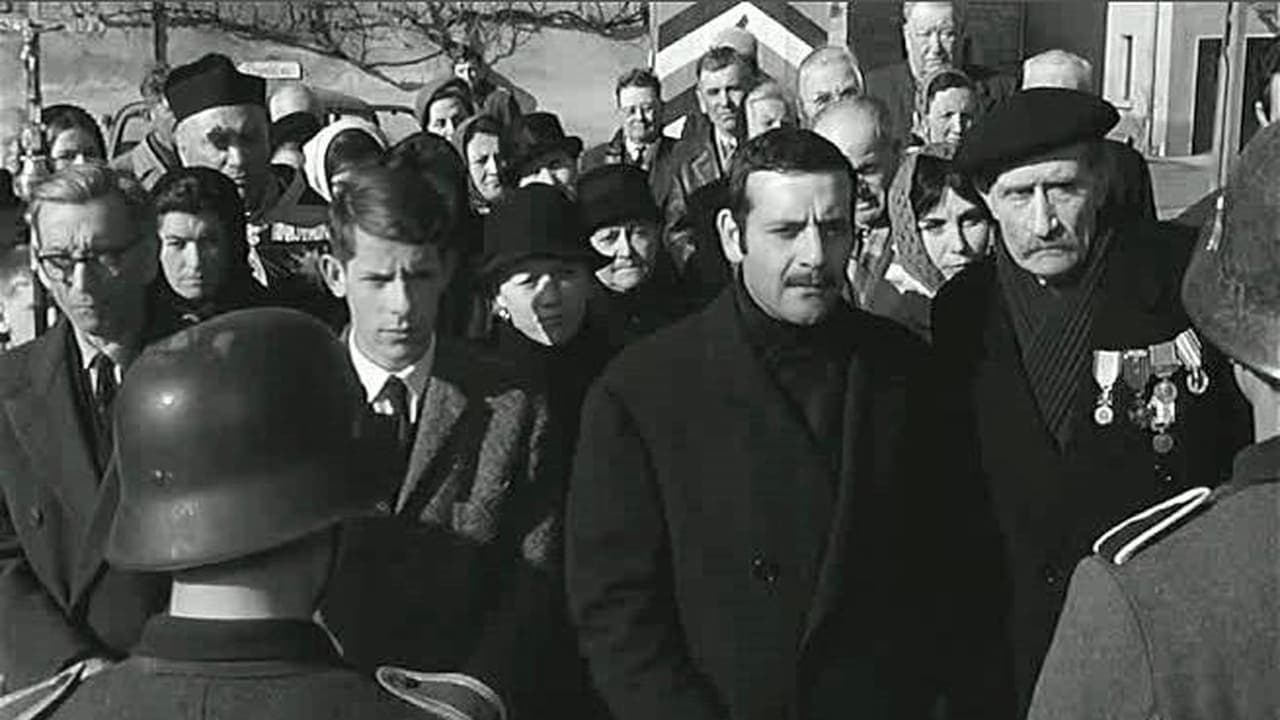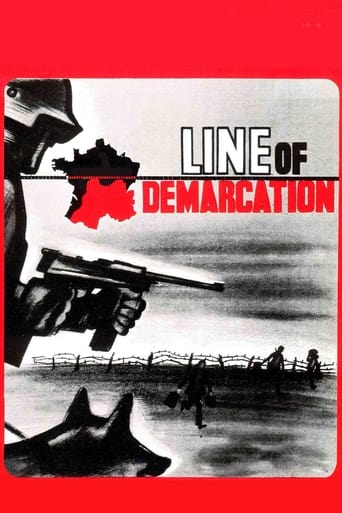SparkMore
n my opinion it was a great movie with some interesting elements, even though having some plot holes and the ending probably was just too messy and crammed together, but still fun to watch and not your casual movie that is similar to all other ones.
filippaberry84
I think this is a new genre that they're all sort of working their way through it and haven't got all the kinks worked out yet but it's a genre that works for me.
Derry Herrera
Not sure how, but this is easily one of the best movies all summer. Multiple levels of funny, never takes itself seriously, super colorful, and creative.
Brennan Camacho
Mostly, the movie is committed to the value of a good time.
JasparLamarCrabb
Claude Chabrol's study of a Nazi occupied French village that is right on the border of the free zone. It's a situation that brings out the best and, in some cases, the worst in the villagers. Count Maurice Ronet & his wife Jean Seberg have had their manor home commandeered by the Germans and are relegated to living in their carriage house. Doctor Daniel Gélin fights with the resistance, while René Havard serves as a toadie for the Nazis, acting as their "interpreter" and supplying a lot more than just his translating talents. Each character in this film is fully fleshed out with idiosyncrasies exposed in short order. Ronet & Seberg are exceptional. Ronet gives a standout performance as an army veteran with a ravaged leg who turns out to be one of the village's gutsiest citizens. The music is by Pierre Jansen and the cinematography is by Jean Rabier, who shot many of Chabrol's films.
Charlot47
In a French village in the winter of 1941, the river forms the line of demarcation between the German-occupied zone and the Vichy zone. Over the bridge comes a released prisoner of war, Count de Damville, who is physically wounded and mentally defeated. His château has become the headquarters of Major von Pritsch and he accepts German rule. His English wife the Countess (Jean Seberg. looking more attractive than in any other film of hers I can think of) has meanwhile joined the Resistance and is helping downed Allied airmen escape over the river.We meet many other inhabitants of the village, mostly patriotic, altruistic and brave but some selfish, cowardly and traitorous. We meet various people they are smuggling over the river, including an unfortunate Jewish family. We meet Resistance fighters, ready to take on the Germans with guns and grenades. And we meet many of the Germans, with von Pritsch and his soldiers doing their job relatively honestly while the Gestapo go about their sordid business with characteristic ruthlessness. Chabrol's black and white camera repeatedly scans the deserted car-free streets and shuttered houses of this bleak wartime winter. Human warmth, where people show love and support for each other, relieves the gloom but human treachery and brutality intensifies it. No laughs and little joy in the film, but that was true of much of Europe at that unhappy time. Overall well worth seeing for the mounting tension, the wide range of vivid characters, the depiction of a small community under huge stress and the ultimate, admittedly muted, optimism that the suffering and sacrifices of the villagers will prove worthwhile.
dbdumonteil
"La ligne de demarcation" is arguably the most successful Chabrol movie of his transitional period -roughly from "l'oeil du malin" (1963) to "la route de Corinthe (1967).Although there are many characters ,this is a well-constructed script ,adapted from the Colonel Remy's book.The film is dedicated to French men and women who became smugglers and helped soldiers and Jews to cross the demarcation line which divided France into two parts:occupied and unoccupied zone during WW2.Among many characters the couple Maurice Ronet/Jean Seberg stands out:he is a defeated officer,his war is over ,and he cannot get over the 1940 debacle.On the contrary her war has only begun .she's involved in resistance and he thinks at the beginning of the movie that finally what happened was fair cause the Germans are the strongest.Seberg's beauty illuminates the movie:her face when she hears the coded message "It's a long way to Gibraltar" is one of the rare moments of happiness in a somber movie.French are not all depicted as heroes.Some are hateful cowards ,who pretend they help the Jews and gives them away to the gestapo.In its way,"la ligne de démarcation" foreshadows several aspects of Chabrol future heyday.Two of his favorite actors ,Stephane Audran and Jean Yanne are already here ("le boucher").The entomological depiction of the villages like in the aforementioned movie is here too.And in some scenes (the attic,the burial, the forest where the patrol is on the prowl) Chabrol displays his skills of master of suspense .Good cast.
argus-10
In May 1940, the French army had suffered an astonishingly quick defeat against the Germans. As a consequence of the armistice signed in June 1940, France was divided into two parts bordered by the so-called line of demarcation. The northern part, including the entire Atlantic coast, was occupied by the Germans. The south, called "Zone libre", remained under French government. It was located at Vichy and headed by Word War I hero maréchal Pétain.The film is set in Winter 1941 in a village divided by the demarcation line, which coincides with a river at this section. A bridge crosses the river. Everyone who wants two pass over has to plead his legitimation to the Germans, who have set up a military command on the northern side in the castle of count Damville (played by Maurice Ronet). The count, a captain of the defeated French army, returns home from war, multiply wounded. He can walk with the help of a cane only. But he is also morally damaged. He doesn't believe in the sense of resistance against the Germans any more, quite in contrast to his wife, the countess (Jean Seberg). She is British-born, listens every evening to the BBC broadcast to France and helps a British crew, whose plane has been shot down, to escape to Gibraltar.The film offers a wide cross-section of possible behavior in times of occupation. There are collaborators, informers, résistance fighters, patriotic veterans from World War I, an upright doctor (Daniel Gélin) and a courageous teacher (Jean Yanne). The Germans are represented by an army major (Reinhard Koldehoff), who tries to keep his minimum standard of military decency, while two Gestapo agents act without any legal or moral inhibitions. The conflict rises to a climax when a British radio operator, working for the résistance, is found out and injured by the Germans. His comrades kidnap him from the hospital, and he hides at the teacher's house, where the countess nurses him. It turns out that the demarcation line not only cuts the French territory in two, but also segregates the French population into true patriots and vile cowards. The crossing of the bridge can also symbolize the change of moral sides.This may seem a bit too clear-cut. Indeed, with the exception of the major, the Germans are represented in the usual stereotypes. But the the French, especially the count, are shown with their doubts and weaknesses. And there are situations where you have to chose between one of two possibilities. A good deal of suspense is generated by the permanent danger of being found out by the Germans. So this film offers not only moral instruction, but also exciting pleasure, conveyed by good performances of Ronet and Seberg.

